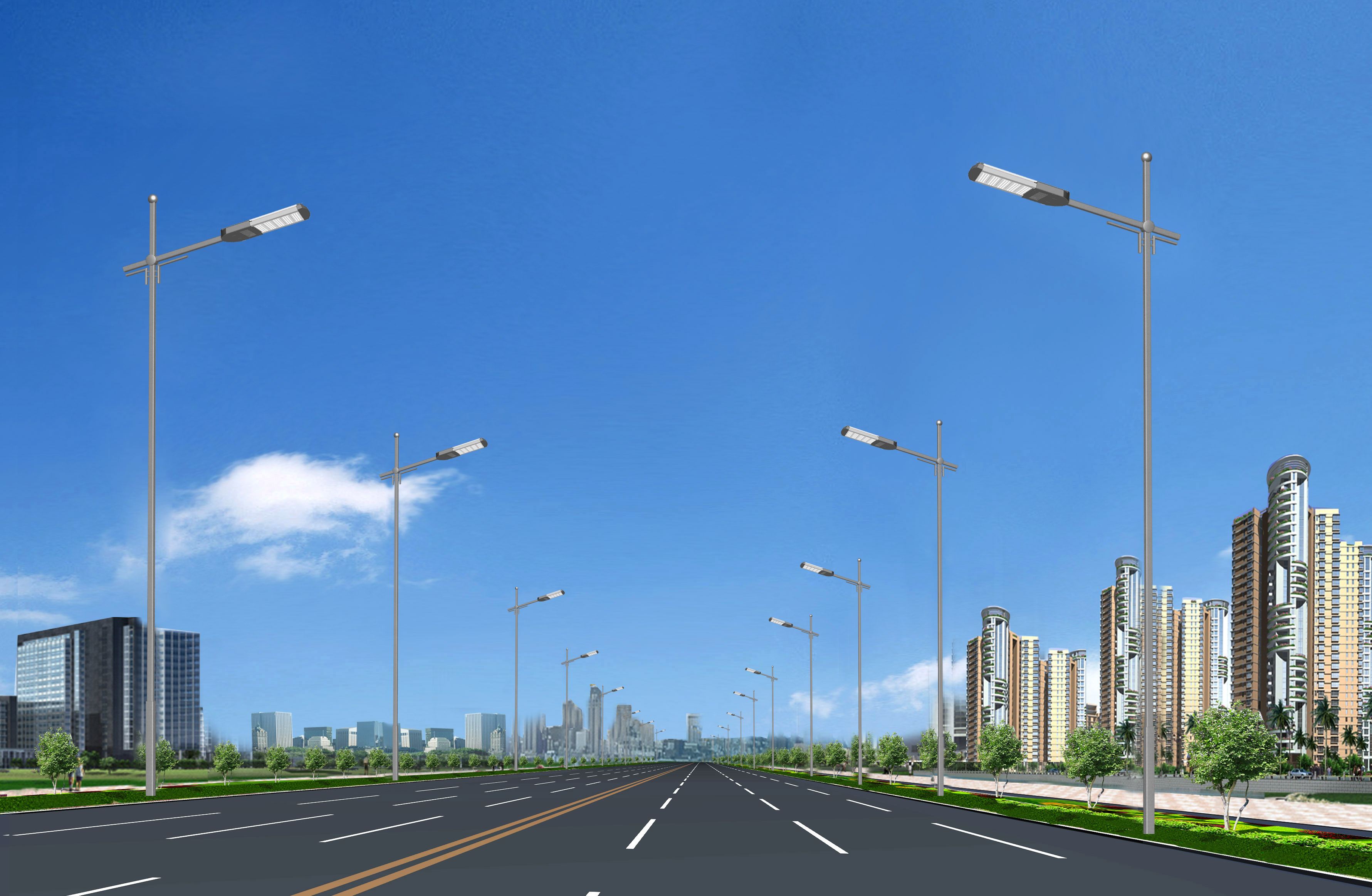How to quickly appraise the quality of LED street lights?
2020-09-14
LED street lights are mainly composed of light source, power supply and radiator. The quality of materials and the technology used directly affect the price of street lights. The inspection starts from the material point of view, quickly evaluates the raw materials and craftsmanship of LED street lights, and appraises the quality of LED street lights.
1. Comprehensive photoelectric performance test of LED street lights
The photoelectric performance test is an important basis for evaluating and reflecting the quality of LED lamps, and finding out whether there is a false standard phenomenon in the lamps.
The detection content includes: (1) total luminous flux; (2) luminous efficiency; (3) light intensity distribution; (4) correlated color temperature (CCT); (5) color rendering index (CRI); (6) chromaticity coordinates or color Degree coordinates; (7) Input AC or (DC) voltage; (8) Input AC or (DC) current; (9) Input power DC or (AC); (10) Input voltage frequency; (11) Power factor.
2. Quality evaluation of the core light source of LED street light
Testing content of LED light source lamp beads:
(1). Evaluation of lens technology, type of packaging glue, presence or absence of pollutants, bubbles, and air tightness evaluation.
(2). Phosphor powder coating Phosphor layer coating process evaluation, phosphor particle size, particle size distribution, composition, presence or absence of agglomeration and sedimentation.
(3). Chip chip process evaluation, chip pattern microstructure measurement, defect search, chip contamination identification, whether there is leakage, whether there is damage.
(4). Wire bonding bonding process evaluation, first and second welding morphology observation, arc height measurement, diameter measurement, lead component identification.
(5). Evaluation of the bonding process of the bonding process, whether the bonding layer has voids, whether it is layered, the composition of the bonding layer, and the thickness of the bonding layer.
(6). Evaluation of stent coating process, stent composition, coating composition, coating thickness, stent air tightness.
3. Evaluation of the heat dissipation performance of LED street lamps. As a new type of energy-saving lamps, the life and quality of LED lamps are closely related to temperature. The lamp bead temperature, housing temperature, and heat dissipation temperature will affect the uniformity and quality of LED lighting.
The heat dissipation evaluation of LED street lamps includes: (1). LED lamp heat dissipation design evaluation; (2). After the lamp reaches thermal equilibrium, whether the temperature of each component is too high; (3). LED heat dissipation material detection, whether to select high specific heat, Heat dissipation material with high thermal conductivity.
4. Does LED street light contain substances harmful to the light source
LED light source is afraid of sulfur, and more than 50% of its failure is caused by sulfur bromine chlorination of the silver-plated layer of lamp beads. After the sulfur bromine chlorination reaction occurs in the LED light source, the functional area of the product will be blackened, the luminous flux will gradually decrease, and the color temperature will drift significantly; during use, leakage is very easy to occur; the more serious situation is that the silver layer is completely corroded and the copper When the layer is exposed, the golden ball appears to fall off, resulting in a dead light. There are more than 50 kinds of raw materials in LED street lights, and these materials may also contain sulfur, chlorine and bromine elements. In a closed, high temperature environment, these sulfur, chlorine and bromine elements may volatilize into gases and corrode the LED light source. Inspection of the identification report of sulfur emission from LED lamps is a key identification report to ensure the stable quality of LED lamps.
5. LED power quality appraisal
The function of the LED drive power supply is to convert AC mains power into DC power suitable for LEDs. When selecting and designing LED driving power supplies, consideration should be given to factors such as reliability, efficiency, power factor, driving mode, surge protection, and temperature negative feedback protection functions; LED driving power supplies for outdoor lamps should consider waterproof and moisture-proof performance, and require their housing to be It is light fast and not easy to age to ensure that the life of the driving power supply can be matched with the life of the LED.
Test content:
(1) Power output parameters: voltage and current;
(2) Whether the driving power supply can guarantee the characteristics of constant current output, whether it is a pure constant current drive mode or a constant current and constant voltage drive mode;
(3) Whether it has a separate Over-current protection, short-circuit protection and open-circuit protection;
(4) Power leakage identification: When the power is on, the shell should be free of charge;
(5) Ripple voltage detection: No ripple voltage is the best, when there is a ripple voltage, the peak Smaller is better;
(6) Flicker evaluation: no flicker after the LED street light is lit;
(7) Power-on output voltage/current: When power-on, the power output should not have a large voltage/current; (8) Whether the power surge meets Related standards, such as: IEC61000-4-5.
6.Identification of chip source
The detected LED chip database contains the data of many domestic and foreign manufacturers' chips, and the data is comprehensive, accurate and fast updated. Through search and matching, the chip model and manufacturer can be confirmed, which helps the lighting manufacturer improve the quality and efficiency of quality control.
7. Inspection of appearance and structure of lamps The bidding document usually stipulates the external lighting materials of the lamps, and these regulations will be checked in detail. 1. Appearance inspection: the paint color is uniform, no pores, cracks, and impurities; the coating must be tightly adhered to the basic material; the surface of the housing of the LED street lamp parts should be smooth and flat, and there should be no scratches, Defects such as cracks and deformation; 2. Dimensional inspection: the external dimensions should meet the requirements of the drawings; 3. Material inspection: The materials used for each part of the lamp and its structural design should meet the requirements of the drawings; 4. Assembly inspection: the fastening screws on the surface of the lamp should be tightened, the edges should be free of burrs and sharp edges, and the connections should be firm and not loose.
8.Waterproof testing LED street lights are outdoor lighting street lights. They should be used in areas ranging from a few meters to more than ten meters in the air. Street lights are extremely difficult to replace and repair, and they are required to have good waterproof and dustproof performance. Therefore, the waterproof and dustproof level of street lights is particularly important.





